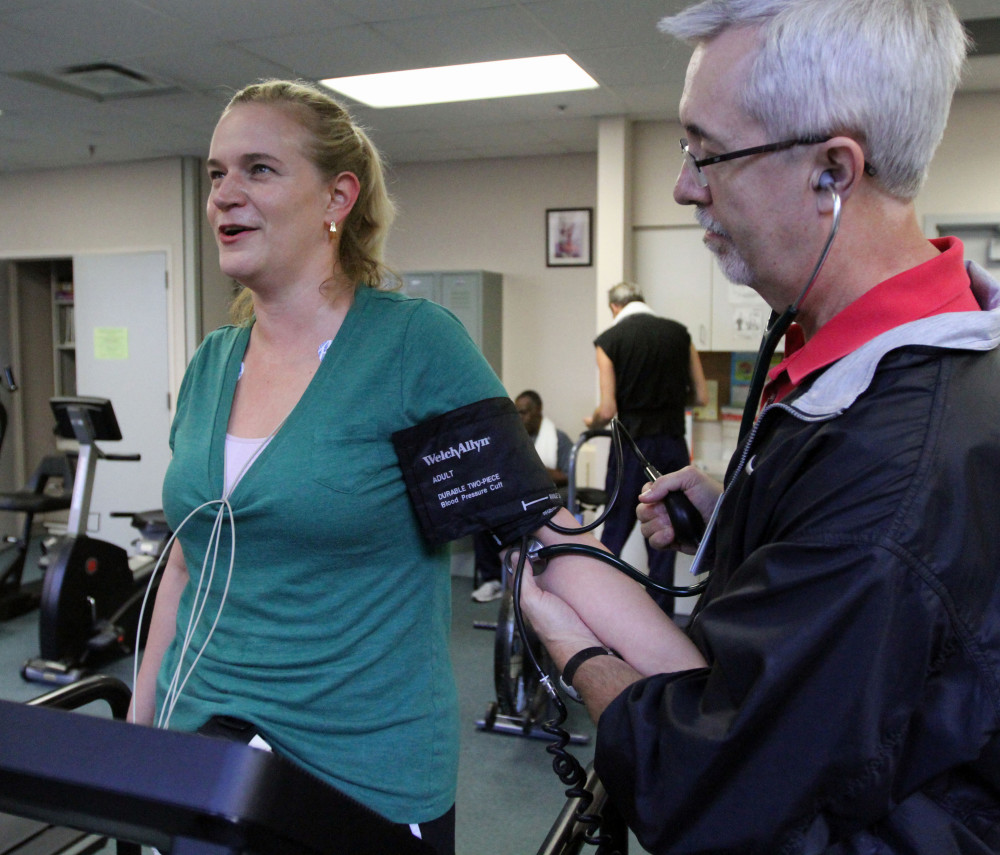By Amanda Cuda
Connecticut Post, Bridgeport.
When it comes to treating a stroke, time is of the essence.
The faster someone with stroke symptoms gets to the hospital, the better their odds of recovering from the condition, which affects the arteries leading to and within the brain.
“We want to see them immediately,” said Dr. Rock Ferrigno, chairman of Bridgeport Hospital’s Emergency Department. “The sooner they get treated, the better the outcome. And that means minutes count.”
Thus, Ferrigno and other doctors were troubled — and surprised — by an American Heart Association survey showing that many women don’t know most warning signs of a stroke.
For the study, published in the AHA journal Stroke, researchers conducted a phone survey of 1,205 women in the United States to see if they knew the major signs of a stroke.
While more than half of them knew that sudden weakness or numbness on one side of the body was a stroke symptom, they were less knowledgeable about other warning signs.
For example, only 44 percent identified difficulty speaking or garbled speech as a warning sign, and less than quarter were able to identify other stroke symptoms, including unexplained dizziness, sudden vision loss or sudden severe headache.
The lone bright spot was that 84 percent of women polled knew the importance of calling 9-1-1 if they thought they were having a stroke.
Ferrigno said patients have the best chance of recovery if they get to a hospital within three hours of the onset of a stroke.
A stroke occurs when a blood vessel carrying oxygen and nutrients to the brain is either blocked by a clot or bursts.
When that happens, part of the brain cannot get the blood it needs, causing brain cells to die.
This can lead to a variety of problems, including paralysis on one side of the body, vision problems, speech problems, memory loss and, in some cases, death.
The AHA reports that stroke is the fourth most common cause of death in the U.S., killing someone once every 4 minutes.
About 60 percent of stroke deaths occur in women.
Locally, many doctors said the study reflects what they see in their practices.
Not recognizing stroke symptoms “is a problem among many women,” said Dr. Srinath Kadimi, stroke director at St. Vincent’s Medical Center in Bridgeport. “But it’s also a problem among men. Generally speaking, most stroke symptoms don’t cause pain.”
The most painful symptom, the headache, doesn’t occur in everyone, Kadimi said, so the warning signs sometimes are ignored.
Ferrigno, meanwhile, said he was somewhat surprised that women were unaware of so many stroke symptoms.
“I feel that women are generally more informed about health issues,” he said.
However, he said the survey results make sense, given many women’s tendency to put off their own health needs in the interest of taking care of others. “Women do tend to be more tolerant of issues,” he said.
The survey also showed that Hispanic women were the least likely of all racial groups to know symptoms.
About 25 percent of Hispanic women polled didn’t know any of the stroke symptoms — compared with 18 percent of white women and 19 percent of black women.
That reflects what Dr. Maher Madhoun, director of adult hospitalist medicine at Stamford Hospital, sees as part of that hospital’s stroke team.
He said many of the women he works with are from Central and South America and he’s noticed that “some of these women tend to have less knowledge about some stroke symptoms.”
Madhoun doesn’t know why this particular population is vulnerable, but doctors said it’s important to keep educating as many people as possible about stroke symptoms.
And, it’s important that people know that, if they have symptoms “you need to get to the hospital immediately,” Ferrigno said. “We need every minute we can get.”














































































































































































































































































































































































